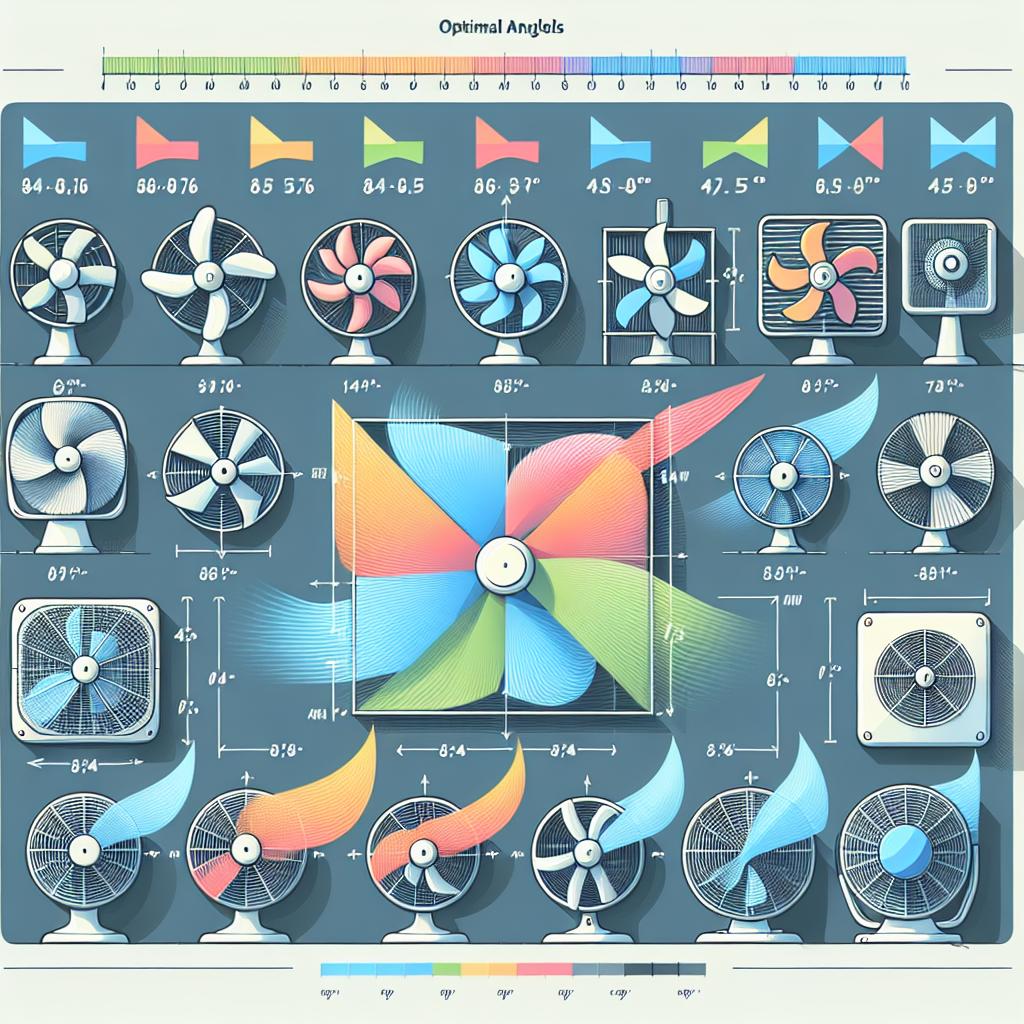In the age of climate control, the humble mini-split air conditioning system has emerged as a favorite for many homeowners and business operators alike. With their sleek design and remarkable efficiency, these systems promise comfort through innovation. However, achieving optimal cooling or heating performance hinges on one often overlooked factor: the positioning and angling of the AC vents. A well-placed vent can mean the difference between a space that feels refreshingly cool or uncomfortably stuffy. In this article, we delve into the best practices for positioning and angling your mini-split AC vents, ensuring that every corner of your room receives the air it needs. Join us as we explore the art and science behind effective air distribution, creating a harmony between comfort and efficiency in your living space.
Understanding the Importance of Proper Vent Positioning
When it comes to optimizing the performance of mini split AC systems, vent positioning can play a crucial role. Proper placement and angling help ensure that cool air is effectively distributed throughout the space, maximizing efficiency and comfort. Consider the following factors:
- Airflow Direction: Angle the vents to direct air towards the areas you use most frequently.
- Obstructions: Avoid placing vents near furniture or window treatments that can block airflow.
- Height and Reach: Position vents higher on walls to allow for better circulation, especially in rooms with high ceilings.
Furthermore, understanding the layout of your space can greatly enhance the effectiveness of your mini split AC system. You might find it beneficial to create zones based on activity levels. To illustrate this, here’s a simple chart showcasing optimal vent placements in common room types:
| Room Type | Optimal Vent Position |
|---|---|
| Living Room | High wall, angled towards seating area |
| Bedroom | Near the door, angled towards the center of the room |
| Kitchen | Above the countertop, angled towards the dining area |

Optimal Angles for Maximum Airflow Efficiency
To optimize airflow efficiency from mini split AC vents, positioning and angling play critical roles. The ideal angle for maximum airflow typically falls between 15 to 30 degrees downward. This incline allows cool air to circulate uniformly throughout the room, preventing cold spots and ensuring an even distribution of temperature. Consider the room layout and furniture placement when determining the optimal direction of the vents; unobstructed pathways enable better airflow and enhance cooling performance. Key factors to consider include:
- Room dimensions: Larger spaces may require more air dispersion.
- Vent location: Centering the vents can offer balanced cooling.
- Furniture arrangement: Avoid placing large objects in direct airflow paths.
Utilizing adjustable vents not only enhances airflow direction but also accounts for variable cooling needs based on occupancy and activity levels within the space. For instance, during peak summer hours, angling vents further downward may help maintain a consistent temperature, while evening relaxation might benefit from a more horizontal airflow. To visualize effective vent angles, refer to the table below, which outlines airflow angles paired with corresponding benefits:
| Angle (Degrees) | Benefits |
|---|---|
| 0° | Direct airflow, ideal for quick cooling in small spaces. |
| 15° | Balanced airflow with minimized cold spots. |
| 30° | Wider air dispersion, perfect for larger areas. |

Minimizing Energy Waste Through Strategic Placement
Proper positioning and angling of mini-split AC vents are pivotal in curbing energy waste and enhancing overall efficiency. By strategically placing these units, homeowners can ensure that cool air circulates evenly throughout the space, minimizing the load on the system. Consider the following tips for optimal placement:
- Avoid obstructions: Ensure that furniture, curtains, or other objects do not block the airflow from the vents.
- Center the unit: Position the mini-split system in the center of the room to promote uniform distribution of air.
- Consider ceiling height: Vents should be installed higher in rooms with high ceilings to facilitate better air circulation.
Angling the vents correctly can also play a significant role in energy efficiency. Directing the airflow towards walls rather than into open spaces can help create a more comfortable environment while reducing energy consumption. A few effective strategies include:
- Diagonal airflow: Adjust the vents to direct air diagonally across the room, enhancing circulation and preventing temperature stratification.
- Adjustable louvers: Utilize adjustable louvers on the vents to control the direction of airflow based on changing room use.
| Placement Strategy | Benefits |
|---|---|
| Center positioning | Promotes even air distribution |
| Avoiding obstructions | Maximizes airflow efficiency |
| Directing airflow against walls | Reduces cooling load |

Adjusting for Seasonal Changes and Room Layouts
When considering the performance of your mini-split AC, it’s crucial to account for seasonal variations that can affect its efficiency. During the summer months, positioning the vents to direct cool air downwards can help combat rising heat in the room. Conversely, in winter, reorienting the vents to distribute warmer air evenly across the ceiling can foster a more comfortable environment. Adapting the direction of the airflow not only enhances comfort levels but also supports energy efficiency, making it essential to know how to shift the vent angles as the seasons shift.
In addition to seasonal adjustments, the layout of your room plays a significant role in how effectively your mini-split AC can cool or heat the space. Consider factors like furniture placement and wall construction when deciding the angle and position of the vents. Here are some tips to optimize airflow based on room layouts:
- Avoid obstructions: Ensure that furniture does not block the path of the airflow.
- Utilize height: Mount the unit high on the wall for a broader reach of air distribution.
- Consider open spaces: For larger areas, point vents towards the center to allow the air to circulate freely.
To visualize how different room shapes can affect airflow, consider the following table breakdown:
| Room Shape | Optimal Vent Position | Recommended Angle |
|---|---|---|
| Square | Center of the wall | Downward |
| Rectangular | Shorter end wall | Diagonal towards center |
| Open Concept | Corner or central wall | Downwards, slightly outward |
Q&A
Q&A: The Best Way to Position and Angle Mini Split AC Vents
Q: What is a mini split AC system, and how do its vents differ from traditional air conditioning systems?
A: A mini split AC system, also known as a ductless air conditioner, comprises an indoor and an outdoor unit. Unlike traditional systems that rely on ductwork to distribute air, mini splits blow cool air directly into the room. This allows for more precise temperature control but necessitates careful positioning and angling of the indoor vents to optimize airflow and efficiency.
Q: Why is the positioning of mini split AC vents so important?
A: Proper positioning is crucial because it directly affects the system’s performance and energy efficiency. Incorrectly positioned vents can lead to hot spots and an uneven temperature distribution, forcing the unit to work harder, which can increase energy bills and shorten its lifespan.
Q: What factors should be considered when positioning mini split AC vents?
A: Several factors come into play: the layout of the room, the presence of furniture or obstructions, the height of the ceiling, and the direction of natural airflow (like doors and windows). Considering these aspects will help ensure that the cool air circulates effectively throughout the space.
Q: Where is the ideal location for installing mini split AC vents?
A: The best location for mini split vents typically includes higher up on the wall or close to the ceiling. This placement takes advantage of the cool air sinking downwards, promoting better circulation. Avoid spots directly above heat sources like appliances or in corners where airflow might be restricted.
Q: How should mini split AC vents be angled for optimal airflow?
A: Ideally, mini split vents should be angled slightly downward or straight ahead toward the center of the room. This encourages a uniform distribution of cool air. Many systems come with adjustable louvers, so experiment with angles to find what works best for your space while avoiding drafts.
Q: Are there any common mistakes to avoid when positioning and angling mini split AC vents?
A: Yes, some common missteps include blocking vents with furniture, angling them directly towards seating areas (which can create discomfort), and installing them in spaces where airflow is impeded, like near curtains or shelves. Avoiding these pitfalls will ensure maximum efficiency.
Q: Can the position and angle of vents impact the aesthetics of a room?
A: Certainly! While functionality is key, the aesthetic aspect is also essential. Thoughtful placement—hiding the unit behind furniture or choosing a wall color that matches—can make a mini split system blend seamlessly with the decor. Additionally, maintaining a clean and uncluttered space around the vents will enhance the overall room design.
Q: How often should I reassess the vent positioning and angle?
A: It’s a good practice to reassess the vents annually or during significant seasonal changes. Factors such as new furniture, renovations, or even changing your room’s layout can alter airflow patterns, making adjustments necessary to optimize efficiency and comfort.
Q: What maintenance should be done to ensure the mini split AC vents continue to operate effectively?
A: Regular cleaning of the vents and filters is essential, as dust and debris can impede airflow. Additionally, check the angle and position if you notice any drop in performance. A professional inspection once a year can also help keep your system running smoothly.
By considering these Q&A insights, you’ll be equipped to maximize the performance and comfort of your mini split AC system, ensuring each cooling breeze is directed just where you need it.
To Conclude
effectively positioning and angling your mini split AC vents is a vital step toward achieving optimal comfort and energy efficiency in your space. By considering factors such as room layout, air circulation, and personal preferences, you can create a tailored environment that meets your unique cooling needs. Remember, even the most advanced mini split systems rely on proper vent direction to deliver their full potential. So take the time to experiment with different angles and placements to find what works best for you. With the right adjustments, you can transform your indoor oasis into a refreshing escape, ensuring that every corner of your home feels just right, no matter the weather outside. Happy cooling!

